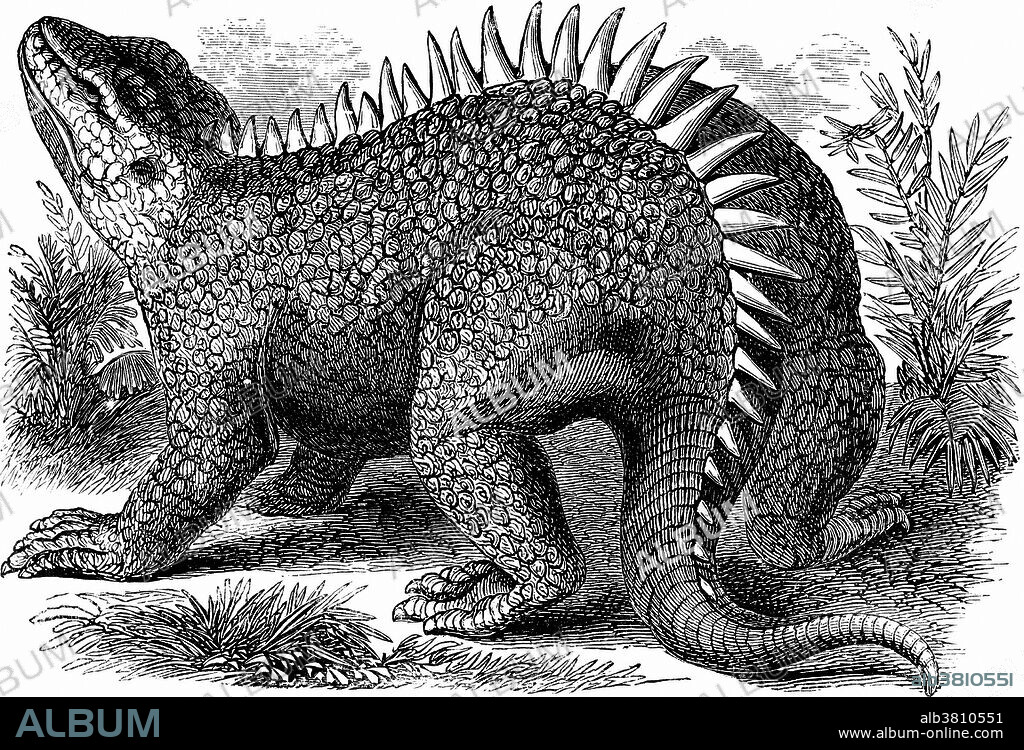alb3810551
Hylaeosaurus, Cretaceous Dinosaur

|
Zu einem anderen Lightbox hinzufügen |
|
Zu einem anderen Lightbox hinzufügen |



Haben Sie bereits ein Konto? Anmelden
Sie haben kein Konto? Registrieren
Dieses Bild kaufen

Titel:
Hylaeosaurus, Cretaceous Dinosaur
Untertitel:
Siehe automatische Übersetzung
Hylaeosaurus (forest lizard) is the most obscure of the three animals used by Richard Owen to define Dinosauria, in 1842. The original specimen, recovered by Gideon Mantell in 1832, now resides in the Natural History Museum of London, where it is still encased in the limestone block in which it was found. Despite never having been prepared, it is still the best specimen that exists of this genus of primitive, armoured ankylosaurian dinosaur. Hylaeosaurus was an armoured, quadrupedal, plant-eating dinosaur from the early Cretaceous period, about 135-119 million years ago. It looked a lot like its more advanced relative Ankylosaurus, but didn't have the bony nodes at the end of its tail or horns on its head.
Bildnachweis:
Album / Science Source / New York Public Library
Freigaben (Releases):
Model: Nein - Eigentum: Nein
Rechtefragen?
Rechtefragen?
Bildgröße:
3969 x 2700 px | 30.7 MB
Druckgröße:
33.6 x 22.9 cm | 13.2 x 9.0 in (300 dpi)
Schlüsselwörter:
DINOSAURIER • EIDECHSE • FAUNA • FORST • HYLAEOSAURUS • ILLUSTRATION • ILLUSTRATIONS • PALAEONTOLOGIE • PALAEOZOOLOGIE • PALÄONTOLOGIE • PALÄOZOOLOGIE • PRAEHISTORISCH • REPTIL: EIDECHSE • REPTILIEN • SKINK • WALD
 Pinterest
Pinterest Twitter
Twitter Facebook
Facebook Link kopieren
Link kopieren Email
Email
